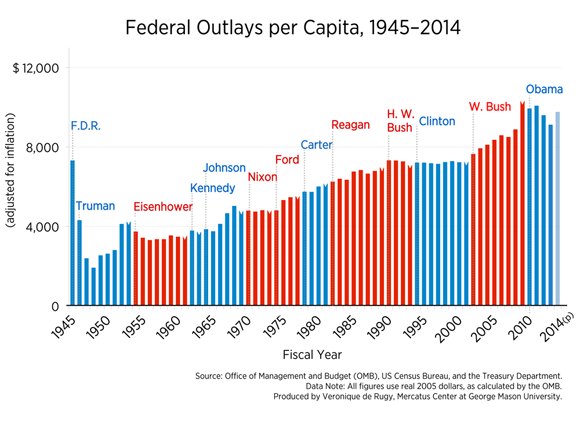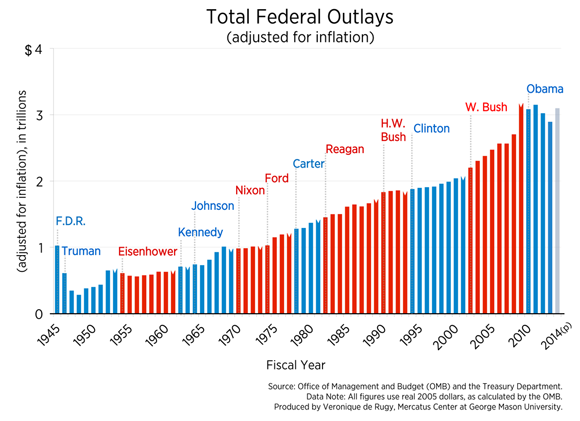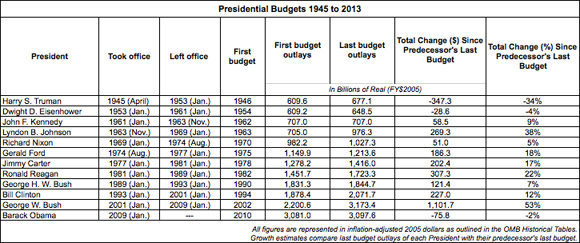- | Government Spending Government Spending
- | Data Visualizations Data Visualizations
- |
Updated: High Levels of Government Spending Become the Status Quo
This week’s charts show the amount of real (2005) federal dollars spent per capita over the past 68 years with updated data. After adjusting for population and inflation, the data show that federal outlays have, with a few exceptions, grown at a staggering pace since 1948.
This week’s charts show the amount of real (2005) federal dollars spent per capita over the past 68 years with updated data. After adjusting for population and inflation, the data show that federal outlays have, with a few exceptions, grown at a staggering pace since 1948.
The first Truman budget spent $4,312 per person. Government spending per person decreased for the next two years and in 1948 hit a historic low of $1,918—a figure that has not been matched in six decades. Today’s spending per person is more than five times this amount.
By the end of the Truman administration per capita spending had climbed back almost to the levels of Truman’s first budget, and it continued to increase under the next few presidents. Kennedy began his term by raising per-person spending to $3,790. Carter, Reagan, George H. W. Bush, and Clinton all began their presidencies with higher per-person spending than their predecessors had ended with.
George H. W. Bush is the only president since Kennedy whose last budget spent less per capita than his first budget. He oversaw a decline in per capita spending, which fell from $7,326 to $7,147 over four years. That trend was reversed under Clinton and George W. Bush, whose last budgets spent $7,267 and $10,337 per person, respectively. However, as the chart shows, the increase in spending during Clinton’s two terms was very slight.
While some of the spending in fiscal year 2009 was a result of President Obama’s so-called stimulus bill, President Bush is still responsible for most of it. Some people might argue that this chart illustrates that the current president is fiscally responsible, that he is not a big spender, or even that the government doesn’t have a spending problem. Those are not correct interpretations.
The chart shows that spending has not increased as quickly under Obama as it did under the previous administration. In fact, it has even fallen slightly, at least for the moment. But the federal government is still spending an enormous amount of money—significantly more than in 2008, and in every single year before that. The fact that the government isn’t quite as bloated as it was at its peak—or not getting fatter as fast as it was before—doesn’t mean the government is lean. Moreover, a Mercatus chart of Congressional Budget Office projections shows that the trend of decreasing spending is unlikely to continue.
The chart below and accompanying table also show a country addicted to spending increases. Every president has spent more total real dollars in his last budget than in his first. Johnson increased spending by 38 percent, George W. Bush increased it by 53 percent, and even Reagan increased total spending by 22 percent.
This country needs to start making real and credible commitments to cutting government spending to avoid dangerous levels of debt and secure prosperity for future generations.




